The images below - all spliced together from screencaps - were produced in the early 19th century by the first (free) professional artist in Australia, JW Lewin. Except where stated, all the sketches are in watercolour. Lewin arrived from London in 1800 with a mission to collect, draw and publish Australia’s natural history for a European audience. The images were contributed by a number of institutions to a NSW State Library exhibition - Lewin: Wild Art - held in Sydney earlier in 2012. [book]

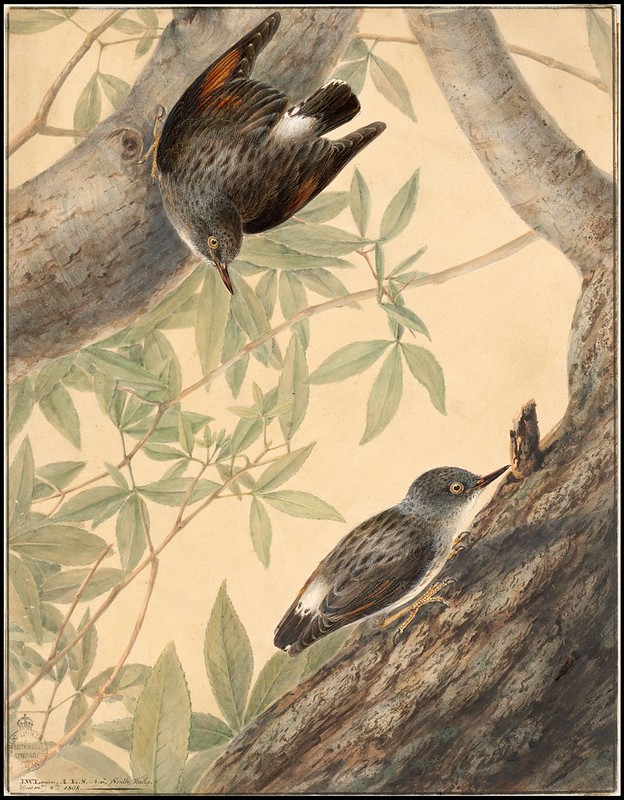
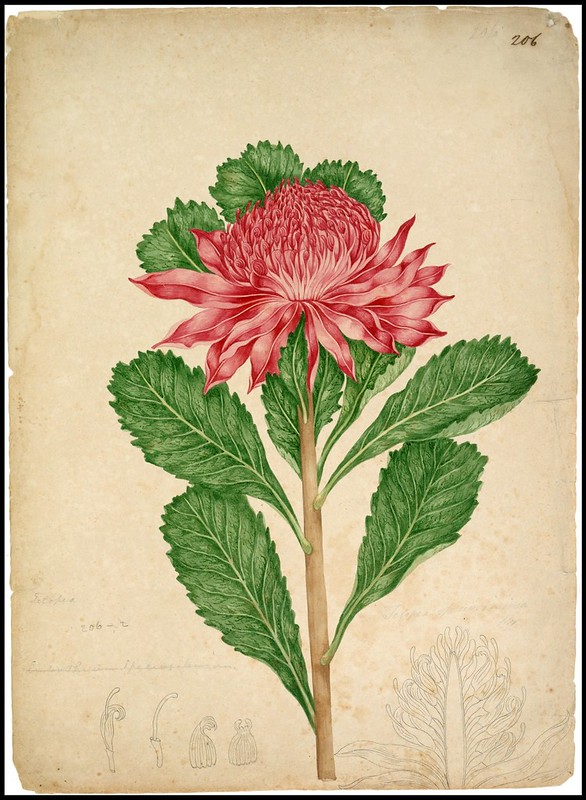
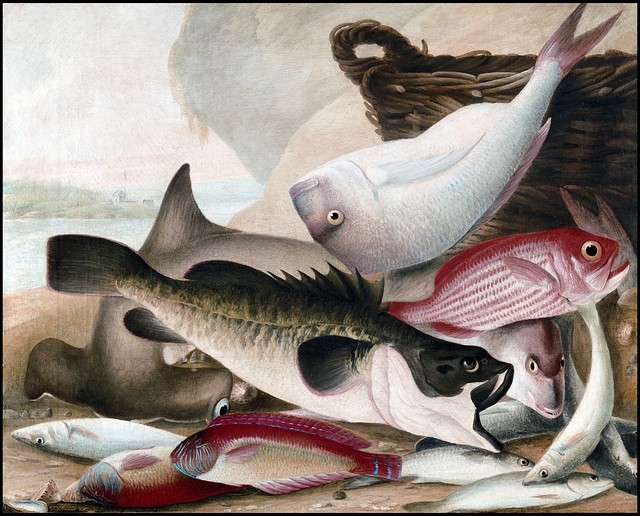
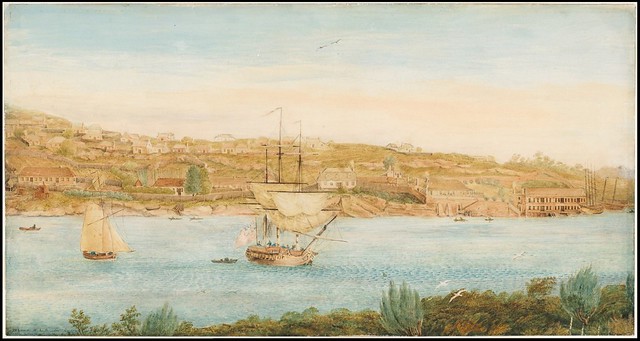
"This watercolour shows the west side of Sydney Cove. At the right is merchant Robert Campbell's house and warehouses, now the site of the Park Hyatt Hotel. The Rocks lie behind. Lewin's watercolours are unromantic and plain. Most views of Sydney made at this time were composed to emphasise its supposed similarity to picturesque English towns."
{? The artist's viewpoint may be from the site of the future Sydney Opera House [map]}

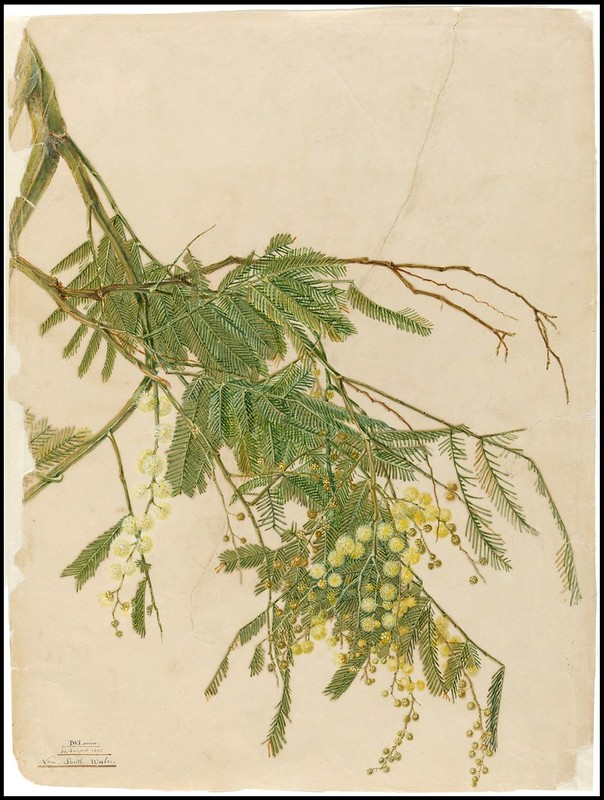
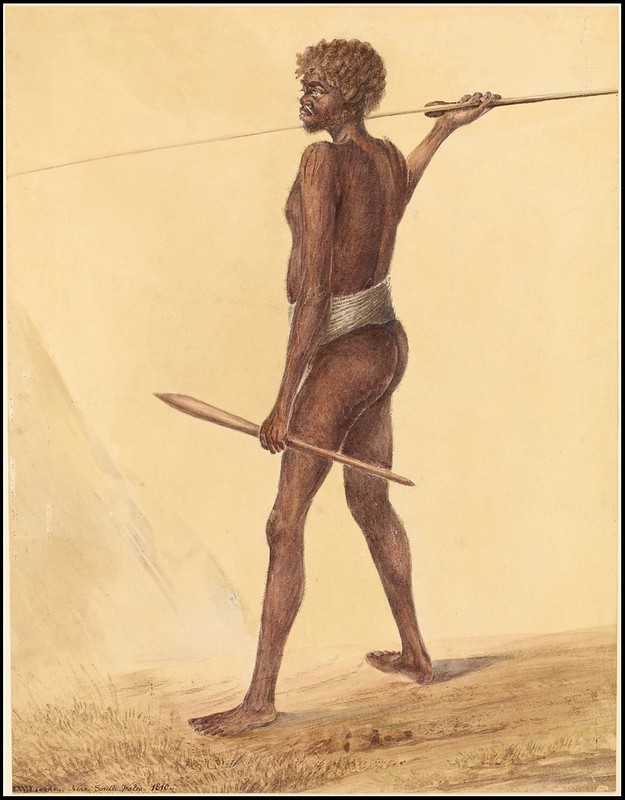
"Lewin made few commercial images of Aboriginal people, perhaps reflecting the generally static interest among colonists towards Aboriginal people during his time in the colony. Many more portraits of Aboriginal people were made during the first 10 years of colonisation, and then from the 1820s onwards. Lewin's watercolours were designed to show Aboriginal people in 'typical' poses."
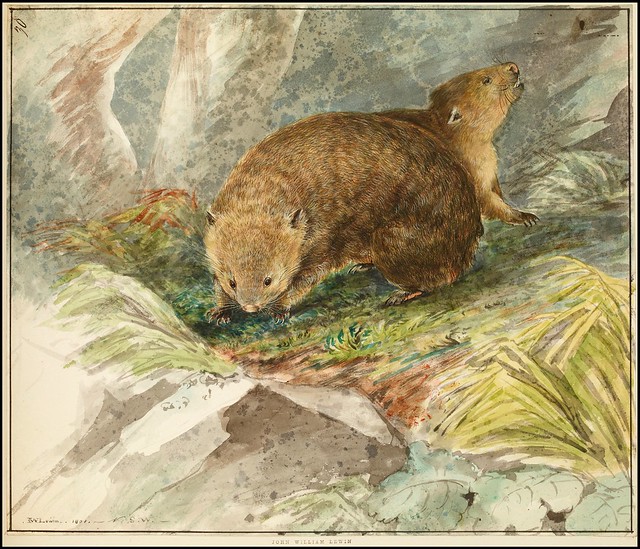
"In 1801 William Paterson sent an English colleague a drawing of a wombat, which he had owned and had 'alive for some days'. This is one of Lewin's first watercolours to locate specimens within a specific local environment, an idea he continued to push."

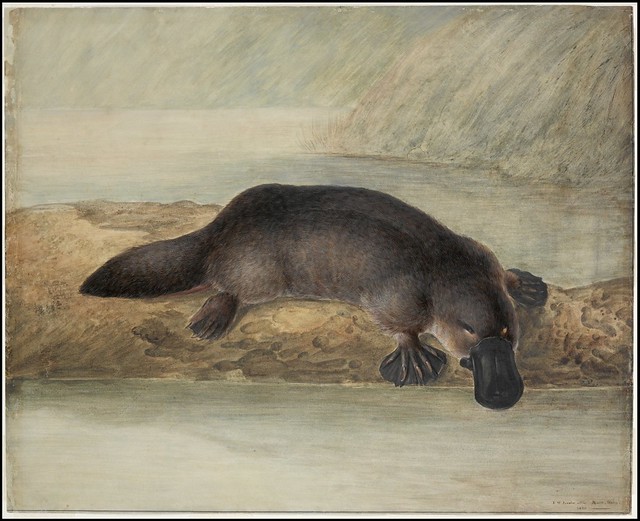
"Of all the mammalia yet known, it seems the most extraordinary in its conformation, exhibiting the perfect resemblance of a the beak of a duck engrafted onthe head of a quadruped. So accurate is the similitude, that, at first view, it naturally excites the idea of some deceptive preparation by artificial means; the very epidermis, proportion, serratures, manner of opening, and other particulars of the beak of a shoveler, or other broad-billed species of duck, presenting themselves to the view: nor is it without the most minute and rigid examination that we can persuade ourselves of its being the real beak or snout of a quadruped." [George Shaw's 'General Zoology' 1800*]
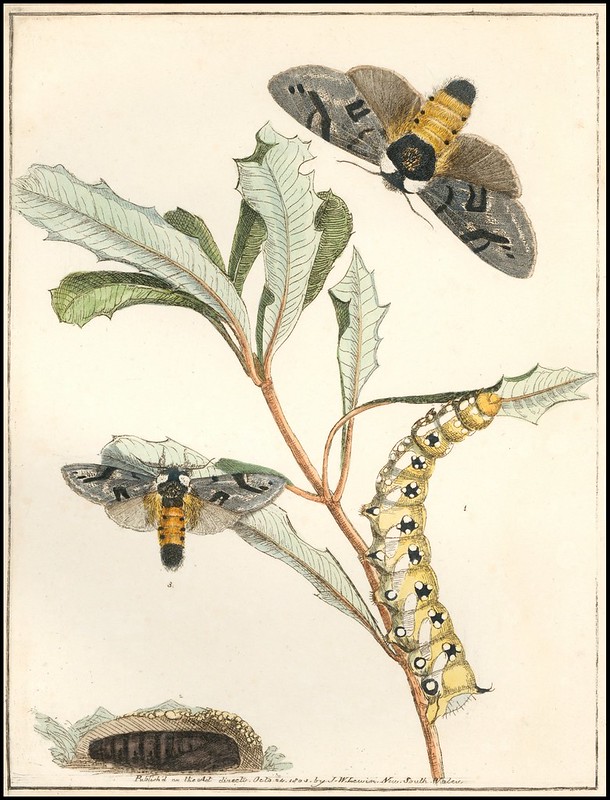

"All known Australian footage of live thylacines, shot in Hobart Zoo, Tasmania, in 1911, 1928, and 1933" - from Wikipedia.
There have been no conclusive sightings of the Tasmanian Tiger since 1936.
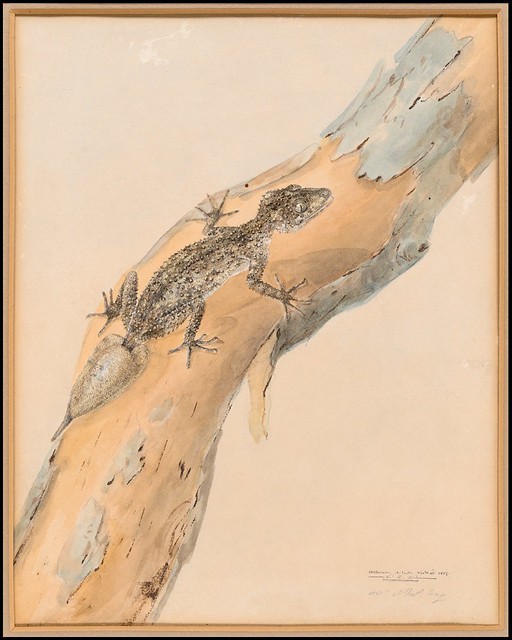
Oddly, there seems to be two separate animals called the southern leaf-tailed gecko: Phyllurus platurus* AND Saltuarius swainii*; but it/they is/are camouflage experts so maybe they're leading double lives.
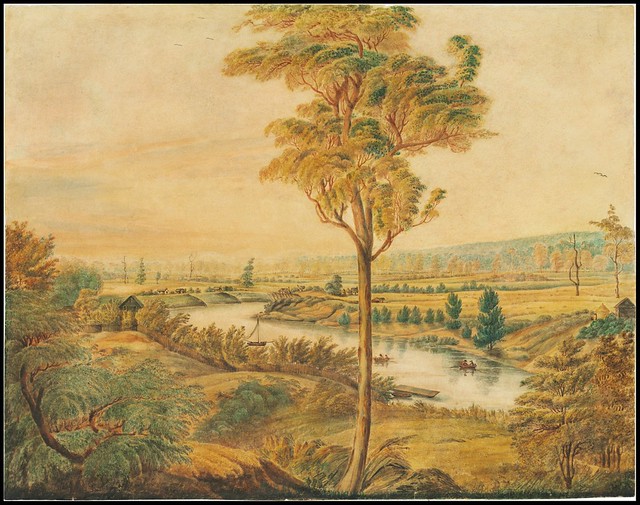
and north west margins of greater Sydney.
"This watercolour depicts the fertile Hawkesbury River. It is Lewin’s most elaborate landscape, which alludes to the richness of the district through its formal composition."
John William Lewin (1770-1819) was a trained natural history artist in England - with a family background in art - who was enticed to visit Australia by stories of the fantastical exotic fauna.
Lewin contributed illustrations to a number of books on local insects and birds. That subject matter had already fallen out of favour by the end of the first decade of the 19th century, so Lewin was unable to raise sufficient funds to return home to England, per his master plan.
Instead, Lewin did portrait painting, upgraded his scientific specimen collecting and sketching techniques and assisted Sydney government office holders with his artistic talents. He gained associate membership of the Linnean Society and was awarded farming land in honour of his well regarded contributions to his adopted city's cultural record.
Lewin was held in high regard by both his peers and by art historians from the modern era too. His sketch works are often cited as groundbreaking attempts at representing Australian scenes in a natural way, moving on from classical/European artifice:
"Art critic Robert Hughes comments that he [Lewin] was the first to record the distinct 'look' of Australia without being blinded by European art conventions".The praise is most noteworthy because Lewin developed his style and talents independently. He wasn't associated with the normal scientific community of the time that included such a luminary figure as the naturalist, Sir Joseph Banks, who arrived with Captain Cook in the 1770s.
All the images above were spliced together from screencaps, sometimes many per illustration. Variable, but modest, amounts of cleaning of background stains was performed on the majority of pictures.
- The images come from a set of 160 pictures that were gathered together by the State Library of NSW for the Lewin: Wild Art exhibition site. The images are best seen in the pseudo-megapixel 'collection viewer' expanded to full screen. Each image can be seen easily in the frame at high resolution. Once you zoom in, descriptive information appears in the margin as well as very short curator videos for many of the illustrations.
- Biographies: Wikipedia & Australian Dictionay of Biography.
- Exhibition review at Oz Wildlife Studio.
- 'Mr JW Lewin: Painter & Naturalist' 2012 by Richard Neville was published to coincide with the SLNSW exhibition. [interview with the author]
- Previously: Australia.



















3 comments :
Ah, this is fantastic! Being Australian I've always had a certain fondness for observing the ways colonial artists tried to come to terms with Australia's flora, fauna and lighting conditions. Lewin's certainly done a whole lot better than a lot of his peers.
I have never seen these before. They are Amazing!
Great sketches...Thanks for sharing!
Post a Comment
Comments are all moderated so don't waste your time spamming: they will never show up.
If you include ANY links that aren't pertinent to the blog post or discussion they will be deleted and a rash will break out in your underwear.
Also: please play the ball and not the person.
Note: only a member of this blog may post a comment.